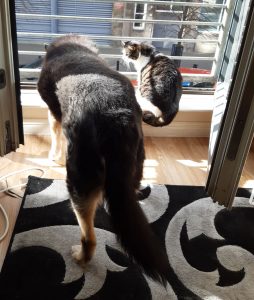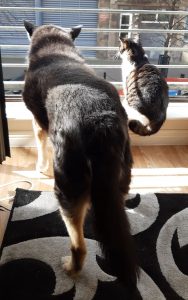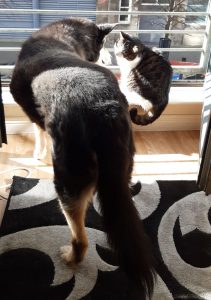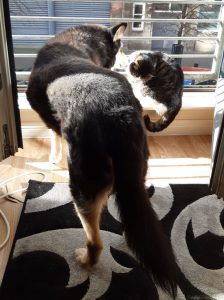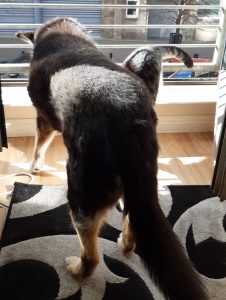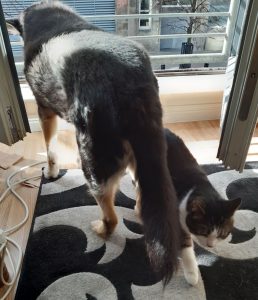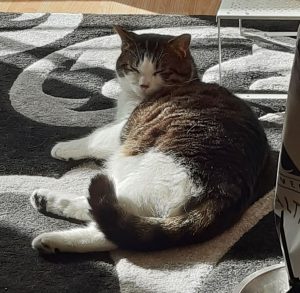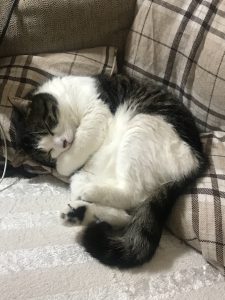Y’all don’t quote me on this. You start out in 1954 by saying, “N****r, n****r, n****r”. By 1968 you can’t say “n****r”—that hurts you. Backfires. So you say stuff like forced busing, states’ rights and all that stuff. You’re getting so abstract now [that] you’re talking about cutting taxes, and all these things you’re talking about are totally economic things and a byproduct of them is [that] blacks get hurt worse than whites. And subconsciously maybe that is part of it. I’m not saying that. But I’m saying that if it is getting that abstract, and that coded, that we are doing away with the racial problem one way or the other. You follow me—because obviously sitting around saying, “We want to cut this”, is much more abstract than even the busing thing, and a hell of a lot more abstract than “N****r, n****r”. So, any way you look at it, race is coming on the backbone.
–Lee Atwater, 1981. Emphasis mine
I think the bold portion of that quote bears thinking about – I think it’s noteworthy that in crafting societal structures to hurt black people, white supremacists are quite willing to also hurt white people.
White supremacy hurts everyone. It hurts non-white people far more, but it does hurt everyone, and it always has. Lyndon Johnson, in 1960, famously put his finger on a central element of white supremacy – that it’s not just about brutalizing and oppressing black people – though that is absolutely a central element – it is also about providing a hierarchical structure to society that uses race to discourage class solidarity, and that tells poor white people that they have a position in the system that’s higher up than someone else, and that’s threatened by efforts toward racial justice.
We were in Tennessee. During the motorcade, he spotted some ugly racial epithets scrawled on signs. Late that night in the hotel, when the local dignitaries had finished the last bottles of bourbon and branch water and departed, he started talking about those signs. “I’ll tell you what’s at the bottom of it,” he said. “If you can convince the lowest white man he’s better than the best colored man, he won’t notice you’re picking his pocket. Hell, give him somebody to look down on, and he’ll empty his pockets for you.”
The true victims of America’s Segregation were, without question, black people. The oppression experienced then, by design, created long-lasting problems and disadvantages, many of which have been used to justify the racial injustices that continue to this day. The constant demonisation and criminalization of black people has now also had side effect that will interfere with our ability to cope with the COVID-19 pandmenic, and will continue to affect management of similar outbreaks for as long as the racial injustices in law enforcement continue. While the CDC is recommending facial coverings for everybody, black people have been pointing out that following those guidelines makes them targets for law enforcement and for white people who’ve been taught to fear any dark-skinned person with their face covered.
The Centers for Disease Control and Prevention took a 180-degree turn last week and is now recommending that people wear face masks in public. The guidelines say that medical grade masks should be reserved for health professionals, who are facing a shortage of supplies, and suggest that Americans use T-shirts, scarves, handkerchiefs, or any other spare fabric to make homemade masks to cover their noses and mouths.
On Saturday I thought about the errands I need to make this week, including a trip to the grocery store. I thought I could use one of my old bandanas as a mask. But then my voice of self-protection reminded me that I, a Black man, cannot walk into a store with a bandana covering the greater part of my face if I also expect to walk out of that store. The situation isn’t safe and could lead to unintended attention, and ultimately a life-or-death situation for me. For me, the fear of being mistaken for an armed robber or assailant is greater than the fear of contracting COVID-19.
These are the fears that Black Americans have to constantly face. Where we can go, how we can show up, what we can wear, what we can say — it never ends. The world is upside down right now with the coronavirus pandemic, and we are living in a dystopian nightmare come to life. Still, we are living in an America where history dictates that, even in the most absurd times, hatred and bigotry continue to reign. We are still judged, convicted, and sentenced by race, by gender, sexual orientation, and class.
Early reports highlight what many have predicted: Those who are impacted by COVID-19 are overwhelmingly people of color, poor people, the homeless, and those living with disabilities. This stems from a lack of equitable access to health care.
Meanwhile, the bigotry escalates. There has been an increase of anti-Asian discrimination because COVID-19 originated in Wuhan, China. Racial tensions are increasingly escalating, and the situation for minorities is getting worse.
As this is a historical moment, it is important that we remember our history. Black men and women in this country have been killed for any and everything. A child with a toy gun, a young girl sleeping in her family home, a man buying an air gun at Walmart. Knowing all that, I just don’t feel safe. Even in a time of pandemic, the discrimination does not stop.
I will not be covering my face until I am able to obtain a face mask that is unmistakable for what it is. Let me be clear: This is not because I do not trust the advice of the CDC — I do. I believe in science, and I have followed all of its guidelines up to this point. I know masks work, and I trust the CDC’s recommendation.
What I do not trust are the innate biases and lack of critical thought about the implications of these decisions. I do not trust that I can walk into a grocery store with my face covered and not be disturbed. I do not trust that I will not be followed. I do not trust that I will be allowed to exist in my Black skin and be able to buy groceries or other necessities without a confrontation and having to explain my intent and my presence. I do not trust that wearing a make-shift mask will allow me to make it back to my home.
So until I receive a mask, I will get to live out my childhood dream of being on “Supermarket Sweep.” And yes, I will attempt to get everything I need into my cart and to the checkout in three minutes or less.
A number of similar articles have been published making the same point, and it means that to whatever degree masks will help reduce the spread of COVID-19, the effects of America’s history of white supremacy will interfere in those efforts, and while that will affect the black and Latino communities more than other demographics, it will cause problems for everyone. This problem with precautionary masking comes along with a growing awareness that in the United States, the COVID-19 epidemic seems to be hitting the black community harder:
As the virus continues to spread, the high mortality rate for black residents is alarming.
“It’s disturbing and upsetting, but not surprising,” said Dr. Linda Rae Murray, health policy professor at the University of Illinois at Chicago. “This is just a reflection of the facts that we already know about these pandemics. People who are vulnerable will die quicker and won’t have as many resources.”
It’s still early in the pandemic and health officials are assessing information on which groups of people are being affected, Dr. Ngozi Ezike, director of the Illinois Department of Public Health, said Saturday. Ezike said she “would not be entirely surprised” if a disproportionate number of deaths were occuring in black communities.
“As we put on our health equity lens, we already know [that] before COVID was ever established that the health outcomes for various communities are already different,” she said. “So if you know those disparities exist in terms of health outcomes, you can imagine that overlaying a new disease is only going to exacerbate whatever inequities already exist.”
Historically, Chicago’s black communities have been disproportionately affected by health-related issues including poverty, environmental pollution, segregation and limited access to medical care.
The American medical system provides a strong incentive for people to leave chronic problems undiagnosed and untreated. The poorer you are, the less likely you are to have insurance that will meaningfully cover real health care, and so to make ends meet, you spend a lot of time hoping problems will go away on their own. In a country where the black population is disproportionately poorer, that means less practice of preventative medicine, and more conditions going without treatment.
To make matters worse, poor and non-white areas in the United States tend to have worse air pollution, which leads to worse heart and lung function – both factors that increase the severity of COVID-19. At the same time, poorer communities are more likely to have “essential” jobs that put them at greater risk of exposure to the virus, and with the massive disparities in who is jailed and imprisoned, black and Latino communities are also likely to suffer greater losses as the virus tears through the country’s crowded and mismanaged prison system.
At an international level, the economic disparities in air pollution hold true worldwide, and a French doctor drew international outrage when he suggested testing COVID-19 drugs in Africa, which still suffers, as a continent, from the effects of European colonialism, and the exploitative business arrangements that replaced it as various countries gained their independence.
In recent years, many white Americans have finally begun to come to terms with the reality that white supremacy never really went away. That’s a good thing. Being more aware of the problem is required if we’re ever going to solve it. But this is not a problem that can be left to solve itself. As the saying goes, justice delayed is justice denied, and the wounds of white supremacy still fester on a global scale. If we don’t address them, environmental collapse, climate change, and the myriad problems that will bring will crash down the hardest on those who have done the least to cause the problem, and who had the least power to prevent it from happening. And that will hurt everyone – not just the “primary” targets.
The movement for global solidarity within the working class is essential to dealing with climate change. Addressing issues of social justice is essential to developing that solidarity. Economic justice will never happen without justice along the lines of race, gender, and religion as well.
Hey everybody, I am once again asking for your assistance. I really need help paying my bills and keeping a roof over my head. Patreon.com is a way for you to help with that, even if it’s just a little bit, and get some perks and extra content in return. You control how much you give, and how long you give it, and every little bit really does help. When lots of people pitch in, it can make a huge difference. Please help if you’re able, and share my work with others. Thank you!


